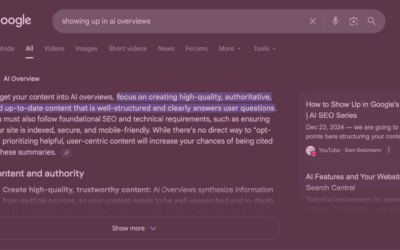In the competitive landscape of search engine optimization, securing high-quality editorial backlinks remains one of the most powerful ways to boost your website’s visibility and authority. High PR (Page Rank) links—earned editorial placements from authoritative publications—stand out as the gold standard of backlinks, offering exceptional value that can transform your search rankings and drive meaningful traffic to your site.
What Are High PR Editorial Links?
High PR links are editorial backlinks earned from websites with substantial domain authority, credibility, and trust in the eyes of search engines. Unlike paid placements or link exchanges, these are genuine editorial mentions where journalists, editors, and content creators voluntarily link to your content because it provides value to their readers. While Google discontinued the public PageRank metric in 2016, the concept evolved into what we now recognize as Domain Authority (DA) and Domain Rating (DR).
These editorial links originate from established, reputable publications—major news outlets, industry magazines, respected blogs, and authoritative educational institutions. The critical distinction is that editorial teams choose to include your link based on merit, not monetary exchange or reciprocal arrangements.
The key difference between high PR editorial links and regular backlinks lies in their earned nature and source quality. A single editorial mention from Forbes, TechCrunch, or an established industry publication carries significantly more weight than dozens of self-submitted directory links or paid placements. High PR editorial links pass substantial “link equity” to your website, signaling to search engines that your content is genuinely trustworthy and valuable.
Why High PR Editorial Links Matter for Your SEO Success
Dramatic Ranking Improvements: High PR editorial links act as powerful endorsements in Google’s algorithm. When authoritative publications editorially choose to link to your content, search engines interpret this as a genuine vote of confidence, often resulting in substantial ranking improvements for your target keywords. Sites that acquire quality editorial links typically see faster and more sustainable ranking growth compared to those relying on manipulative link schemes.
Quality Referral Traffic: Beyond SEO benefits, high PR editorial links generate targeted referral traffic from highly engaged audiences. Readers clicking through from trusted publications arrive with pre-established interest and trust, leading to better engagement metrics, lower bounce rates, and significantly higher conversion rates than traffic from lower-quality sources.
Enhanced Brand Credibility: Being featured editorially on high-authority websites dramatically elevates your brand’s perceived expertise and trustworthiness. When potential customers research your business and discover organic mentions in respected publications, it profoundly influences their purchasing decisions and builds confidence in your offerings. Editorial coverage serves as third-party validation that money simply cannot buy.
Long-Term Competitive Advantage: Unlike some SEO tactics that provide temporary boosts, high PR editorial links deliver lasting value. Quality editorial backlinks continue benefiting your site for years, creating a competitive moat that’s difficult for competitors to overcome quickly. These links rarely disappear and maintain their value even as algorithms evolve.
White Hat Strategies: The Only Path to Editorial Links
Building high PR editorial links requires unwavering commitment to white hat techniques that align with Google’s guidelines. Black hat methods like buying links, participating in link schemes, using private blog networks, or disguising paid placements as editorial content will inevitably lead to severe penalties that can devastate your online presence.
White hat strategies focus exclusively on earning editorial links through genuine value creation. This means producing content so valuable, newsworthy, or useful that authoritative publications naturally want to reference it. It involves building authentic relationships with journalists and editors, contributing meaningful expertise to industry conversations, and positioning yourself as a credible source worth citing. While this approach demands more effort and patience, it creates sustainable growth without risking algorithmic penalties.
Top Strategies to Secure High PR Editorial Links
Create Original Research and Data Studies: Nothing attracts editorial backlinks like original research. Conduct industry surveys, analyze proprietary data, or compile statistics that reveal new insights journalists can’t find elsewhere. Publications constantly seek credible data to support their stories, making well-presented research an editorial link magnet. Present findings with compelling visualizations, clear methodology, and quotable insights to maximize newsworthiness and shareability.
Become a Credible Expert Source: Position yourself as the go-to authority in your niche by consistently demonstrating expertise. Publish thought leadership content, speak at industry conferences, and contribute original insights on emerging trends. When journalists need expert perspectives, they turn to recognized authorities. Build your credibility systematically so editors naturally think of you when covering relevant topics.
Develop Newsworthy Interactive Content: Interactive tools, calculators, and data visualizations earn editorial links because they provide unique utility that journalists want to reference. A comprehensive industry benchmark tool, innovative calculator, or data-driven interactive infographic can generate hundreds of editorial mentions as reporters and bloggers cite your resource. Invest in professional quality to ensure media outlets feel confident linking to your work.
Leverage Breaking News and Trends: Newsjacking trending topics allows you to earn timely editorial mentions. When major industry news breaks, quickly publish thoughtful analysis with unique angles or expert commentary. Pitch your perspective to journalists actively covering the story. During annual events or predictable news cycles, prepare relevant data or insights in advance so you’re ready when media attention peaks.
Utilize HARO and Media Request Platforms: Help a Reporter Out (HARO), Featured, and similar platforms connect journalists seeking expert sources with knowledgeable professionals. Dedicate time daily to crafting insightful, quotable responses to relevant media queries. While not every response converts to an editorial link, consistent participation yields high-authority backlinks from major publications. Focus on providing genuine value rather than promotional content—journalists can spot self-serving responses instantly.
Build Genuine Journalist Relationships: Developing authentic relationships with reporters and editors in your industry creates ongoing editorial link opportunities. Engage meaningfully with their content, share their articles, and offer helpful information without expecting anything in return. When you’ve established trust and recognition, journalists naturally turn to you for quotes, contributions, and expert perspectives that result in editorial mentions.
Launch Data-Driven Campaigns: Create compelling stories around proprietary data, customer insights, or industry trends. Package findings into press-ready formats with executive summaries, key statistics, and visual assets. Pitch these stories to relevant publications emphasizing the newsworthiness and exclusivity. Data-driven campaigns earn editorial coverage because they provide fresh angles journalists need for compelling stories.
Create Definitive Resources: Develop comprehensive guides, research reports, or resource compilations that become industry standards. When you create the most thorough, accurate resource on a topic, it naturally becomes the reference that journalists, bloggers, and educators link to editorially. These evergreen assets continue earning links long after publication.
Finding Editorial Link Opportunities
Identifying the right editorial link opportunities requires strategic research. Monitor which publications cover your industry regularly and analyze their content patterns. Use tools like Ahrefs or SEMrush to discover where competitors earn editorial mentions, revealing publications open to covering businesses in your space.
Follow journalists who cover your beat on Twitter and LinkedIn. Understand their interests, beats, and content needs. Subscribe to relevant media newsletters and set up Google Alerts for industry keywords to identify when publications are actively covering topics where you could contribute expertise.
Evaluate potential editorial sources carefully. Prioritize publications with genuine editorial standards, engaged audiences, and topical relevance over those with high domain authority but no connection to your niche. An editorial mention from a moderately authoritative but highly relevant industry publication often outperforms a generic link from an unrelated high-DA site.
Effective Media Outreach for Editorial Coverage
Earning editorial links requires professional media outreach that respects journalists’ time and needs. Pitch newsworthy angles rather than promotional content. Journalists seek stories their audiences care about—not advertising for your business. Frame pitches around data, trends, or insights that serve their readers.
Personalization is absolutely essential. Reference specific articles the journalist has written, explain why your pitch fits their beat, and demonstrate understanding of their publication’s audience. Generic mass emails get immediately deleted.
Keep pitches concise and scannable. Lead with the most compelling element—whether that’s an exclusive statistic, unique expert perspective, or timely news angle. Provide everything journalists need: key data points, expert availability, high-resolution images, and supporting materials. Make saying yes effortless.
Timing matters enormously. Pitch breaking news within hours, seasonal stories weeks in advance, and evergreen content when journalists aren’t overwhelmed with timely coverage. Respect editorial calendars and deadlines.
Measuring Your Editorial Link Success
Track metrics that reflect genuine editorial link value. Monitor domain authority growth, search ranking improvements for target keywords, and referral traffic quality from earned links. Analyze whether editorial mentions drive engaged visitors who convert, not just vanity metrics.
Calculate ROI by comparing investment in content creation, research, and outreach against tangible outcomes like increased organic traffic, lead generation, and revenue growth attributable to improved search visibility and brand authority.
Use tools like Google Analytics to track referral traffic sources, Ahrefs or SEMrush to monitor backlink acquisition, and rank tracking software to correlate editorial link gains with search performance improvements.
Conclusion: Building Your Editorial Link Strategy
High PR editorial links represent the most valuable assets in digital marketing, but they require strategic thinking, genuine expertise, and consistent effort to earn. Focus on creating newsworthy content, building authentic media relationships, and positioning yourself as a credible industry authority. There are no shortcuts—editorial links must be earned through demonstrated value.
Start by identifying your most linkable assets, developing original research or insights journalists need, and systematically building relationships with reporters covering your industry. Whether you’re an e-commerce business, service provider, or SaaS startup, the principles remain constant: provide exceptional value, earn trust through expertise, and let editorial coverage follow naturally.
The investment in earning high PR editorial links pays dividends for years, creating sustainable competitive advantages that compound over time. Begin implementing these strategies today, and watch as your authority, rankings, and business growth accelerate through the power of genuinely earned editorial backlinks.



